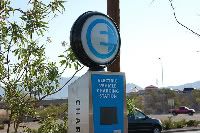Ocean Thermal Energy Corporation — Leading the Way in a Critically Important New Technology
Next Wednesday, I’m headed into the local television studio that we use to make our videos, to shoot several short pieces introducing different clean energy technologies and the companies that I believe to be likely winners in the marketplace. One such technology, previously under-represented here at 2GreenEnergy, is OTEC (ocean thermal energy conversion). (more…)






